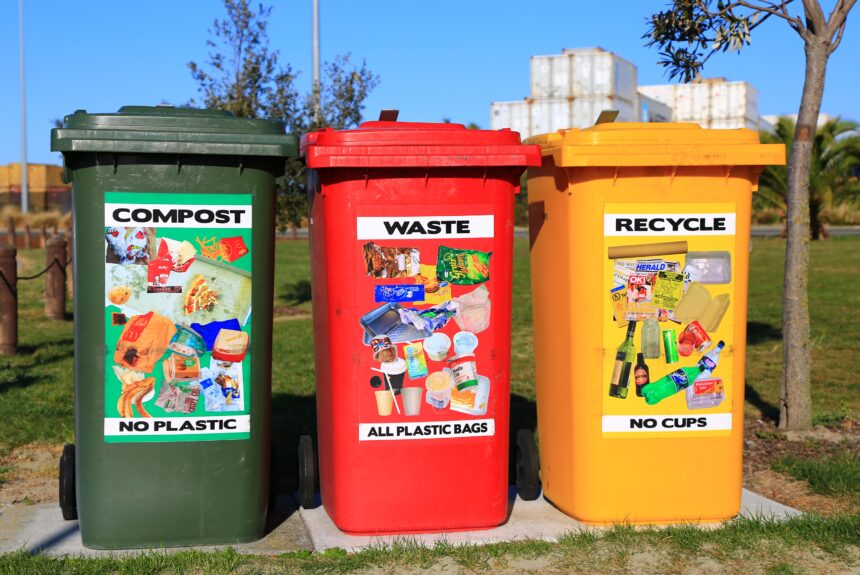The amount of waste produced globally has reached unprecedented levels. Annual municipal solid waste generation exceeds over two billion tons, equal to roughly 0.74 kilograms per person daily. High-income nations, making up only 16% of population, generate 36% of total waste. This highlights the disproportionate consumption and waste levels correlated with higher incomes.
The ecological consequences of rampant waste are far-reaching. Manufacturing products later discarded uses up precious resources like water, minerals, timber, and fossil fuels. Mass production and consumerism drives deforestation for land, pulp, and packaging. Toxic chemicals pollute waters near manufacturing hubs. Greenhouse gasses from product life cycles contribute heavily to climate change through global warming. Environmentally conscious consumption and waste reduction protects nature under threat from human activity.
Extent of Global Waste
Plastics demonstrate the environmental perils surrounding convenience and consumerism. Their durability provides functionality but persists for centuries as landfill, litter, and marine debris. Annually around eight million tons of plastic enters oceans, equal to dumping a filled garbage truck into seas every minute. Once discarded, plastics break down into microplastics infiltrating food chains. Studies confirm the presence of microplastics in aquatic animals, livestock, and shockingly – human organs. Though toxicological impacts remain unclear, the magnitude of plastic waste signals the need for dramatic reduction and responsible handling globally. If you want to see more detail about War On Waste Statistics then this site has it all.
Ecological Footprint of Waste
Industrial waste contributes about half of total waste worldwide. Toxic effluents like ash, sludge, and chemicals from manufacturing and extraction processes pollute air, land and water. These contaminate nearby soils and waters, emitting greenhouse gasses and chemical vapors toxic to humans and wildlife. Negligent handling of industrial waste causes environmental disasters like Minamata, Love Canal, and Times Beach – where entire communities face abandonment over pollution. Strict regulation and business accountability regarding industrial waste remains critical for public and environmental health.
The Danger of Plastics
Over 50 million tons per year of e-waste like discarded electronics and electrical equipment enters the global waste stream, mostly destined for landfills or improper processing. These contain heavy metals like lead, cadmium and mercury which leach into surroundings when decomposing or incinerated without emissions controls. Humans and animals risk toxic exposures that jeopardize genomes, development, immunity, and reproduction from such bioaccumulative pollutants. Establishing facilities for specialized e-waste recycling and instituting right-to-repair policies could divert items from waste while regenerating valuable component materials.
Effects of Industrial Waste
Waste reduction initiatives like “Refuse, Reduce, Reuse, Repurpose, Recycle” aim to limit waste generation and diversion from landfills through conscientious consumption, conservation, and materials recovery. Small-scale participation aggregated globally could drive meaningful progress – saving resources, reducing carbon emissions, and preserving biodiversity. Governments play pivotal roles enacting policies and establishing infrastructure facilitating widespread adoption of waste reduction principles.
Waste Management Strategies
Daily lifestyle habits significantly influence personal waste footprints. Carrying reusable bags when shopping, carrying refillable bottles and mugs, and packing waste-free lunches and snacks limits single-use disposables and packaging entering waste flows. Choosing durable goods above cheap disposable variants, mending and maintaining rather than replacing items at end-of-life, and donating usable items instead of discarding all defer waste too. Small spend adjustments enable greener choices, like buying package-free or concentrated products in bulk formats with reduced packaging.
Reducing Household Waste
Home and community composting of organic wastes like yard trimmings and food scraps creates productive soil amendments for gardens and urban farms while achieving waste reductions. Digesting organic matter using aerobic bacteria and fungi converts discarded organic matter into stable, nutrient-rich humus. Compost benefits include water retention during droughts, suppressing plant diseases and pests, avoiding chemical inputs, and securing higher yields for food and flower cultivation. Home composting thus tackles waste reduction, food security, and environmental health simultaneously via elegantly symbiotic natural cycles. And excess green waste can be removed safely by services such as Same Day Rubbish Removal.
Waste Reduction Hacks
Materials recycling fundamentally supports waste reduction, conserving resources and energy against extraction and production. Turning used materials into feedstock for manufacturing new goods reduces landfill deposits, lowers exploitation of timber, minerals, and fossil fuels, and mitigates carbon emissions and water pollution from additional harvesting and processing. Effective recycling relies upon consumers and businesses separating designated recyclables like paper, metals, electronics and plastics. Governments encourage recycling by facilitating collection programs and instituting handling regulations. Recycling works best when viewed as shared responsibility between multiple stakeholders.
The Role of Recycling
Transitioning towards circular economic models creates closed-loop material flows mimicking regenerative natural cycles. This paradigm shift designs products and systems supporting dematerialization, reuse, repair, and recycling rather than the traditional linear trajectory of take, make, waste. Products designed for durability, modularity, and disassembly keep materials circulating in production cycles longer, conserving resources while capturing value. Waste-free circularity decouples economic growth from rising resource consumption, measuring success via material productivity rather than monetary metrics alone.
Business Responsibility and Waste
A zero waste future demands minimize waste generation, massively scaled composting and recycling for remaining materials, and phased bans on landfilling recoverable commodities like paper, metals and plastics. Investment in advanced technologies like enzymatic recycling, plasma gasification, and pyrolysis enables hitherto unrecyclable materials to reenter manufacturing streams. Challenges exist around developing integrated systems balancing sustainability, economics and societal expectations, but the rewards of preserving natural resources and ecological stability necessitate ambitious commitments from all stakeholders.
Policies for Waste Reduction
Mitigating the global waste crisis requires a coordinated effort across government, industry and civil society towards shared goals of reduction and responsible recovery. Progress relies upon each person, community and nation contributing through ethical consumption, lifestyle changes, policy interventions, and technology innovation. Incentives for green businesses and residents can promote change too.
While the path presents political, technical and social challenges, conscious action taken today creates ripple effects benefitting generations tomorrow through conserved resources and protected natural systems. This legacy demands participation by all inhabitants sharing responsibility for this planetary home.
The Path Ahead for Waste Management
A zero waste future demands a systematic approach across the waste lifecycle – from extraction to production, consumption, collection, recovery and residuals management. Generating less waste at onset through dematerialization and comprehensive recycling rates minimizes residuals needing disposal. Advanced waste-to-energy (WtE) conversion technologies like gasification, pyrolysis, and plasma arc treatment enable enhanced recovery rates while generating electricity and heat. However widespread adoption faces challenges around clean syntheses and environmental health risks.
Certain regions spearhead progress towards integrated waste management infrastructure and closed-loop material flows. San Francisco currently diverts 80% of waste from landfills largely through mandatory composting and recycling ordinances with consumer compliance incentives, while the Flanders region of Belgium holds the world’s highest recycling rate over 70%. At current trajectory Europe may achieve 70% municipal waste recycling by the 2030s through coordinated policy, public engagement and infrastructure integration.
Ambitious organizations also pilot futuristic cityscapes maximizing sustainability and livability. Saudi Arabia’s upcoming zero-carbon, zero-waste, fully-renewable Neom megacity tests innovations like digital twin modeling to optimize urban flows. Rotterdam’s floating Buiksloterham neighborhood marshals resources sustainably through circular construction techniques, edible greenspaces, vertical farming, aquatic recycling and more. Though uncertain in outcome, pioneering projects at urban scale spark public dialogue and technical breakthroughs for replicable solutions elsewhere.
Final Thoughts
In closing, the path to solving the global waste dilemma depends on coordinated efforts by individuals, businesses, nonprofits, governments and technology firms worldwide to eliminate waste through better design and responsible recovery. Each small step towards “zero” builds momentum shifting entrenched systems onto more sustainable trajectories, where innovations in products, services and infrastructure preserve natural resources for future generations worldwide.
Photo by Nareeta Martin on Unsplash


